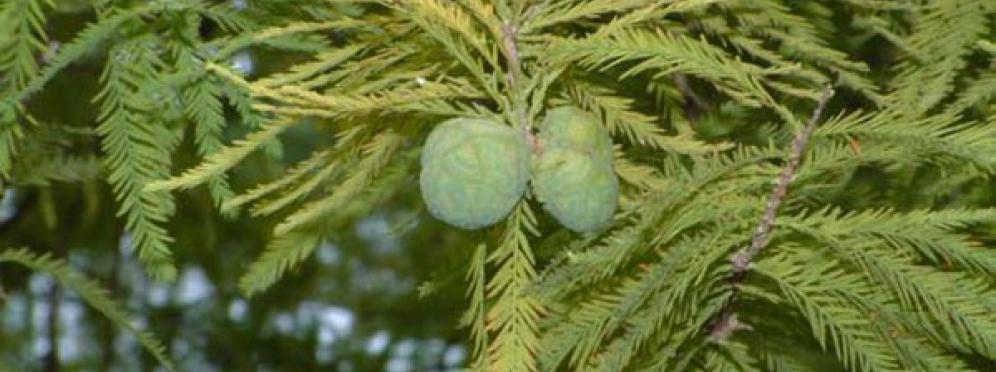Bald cypress
The bald cypress belongs to the Taxodiaceae family, and is a conifer native to swampy areas in Florida and the Gulf of Mexico, where the Mississippi branches into a network of channels.

The bald cypress belongs to the Taxodiaceae family, and is a conifer native to swampy areas in Florida and the Gulf of Mexico, where the Mississippi branches into a network of channels. Areas that are flooded for long periods and where water reaches high levels, are usually colonised by evergreen, deciduous broadleaf and deciduous conifer woodland with three Taxodium species.
Bald cypresses are huge trees which may reach 40 metres, with reddish-brown bark, buttressed trunks, pyramidal heads, and leaves which turn red in autumn, still attached to the young shoots, and then fall, covering the surrounding ground. Their most peculiar characteristic is their root system, which grows deep into stagnant, poorly oxygenated mud, and sends woody projections (even quite far from the trunk), called “knees”, above the waterline. These may reach 2 metres and are specialised structures, also called pneumatophores. They have a specialised anatomical structure with pores (lenticels) in their bark, enabling air to enter and circulate in the roots through air spaces connected to the submerged parts, and reach the underwater tissues. Due to their love and need of water, bald cypresses are common in historic parks and gardens of the Po Plain, and along channels, ponds and small lakes, from which their respiratory roots emerge. In spontaneous woodland, the branches of bald cypresses and other trees are clad with hanging tufts and festoons of Spanish moss (Tillandsia usneoides L.), which are their only decoration in winter. Despite its name, this is not a type of moss, but an epiphytic Bromeliacea with flexible, threadlike stems (sometimes used, dried, as a substitute for horsehair). Various members of the Bromeliaceae (pineapple family) are used as ornamentals and, in Padova, may be seen in winter in the greenhouse bearing their name.
The Botanical Garden hosts a few ancient specimens of bald cypresses, one in the quarter with plants from the Euganean Hills, near the south gate, and three near the entrance (Ponte delle Priare), along the canal, bearing visible pneumatophores. Along the same canal is a fourth specimen, which is slightly different from the others in that its coriaceous pine cones are not oval but round. It belongs to a different species, Taxodium ascendens Brongn. Near the entrance bridge is a spiny cryptomeria, or Japanese cedar (Cryptomeria japonica G. Don), of the Taxodiaceae family which, in cold temperate areas of the central Japanese islands, lives in humid beech woodland with oaks, ashes, maple trees and sorbs. This plant in the Padua Botanical Garden is particularly interesting from the historical viewpoint, because in 1850 it was the first specimen brought to Italy. Today, this columnar tree, with reddish-brown bark and pyramidal head, is grown in southern Italy for reafforestation purposes, but it is also frequently cultivated in parks and gardens for the beauty of its needle-like evergreen leaves, which change colours with the seasons, from pale to blue-green, then violet in winter. Its pollen is highly allergenic.
The Taxodiaceae are one of the most interesting conifer families, fossils of which date back 150 million years. They are presently scattered, and their populations are the remains of larger groups of the Tertiary epoch. They have persistent or deciduous needle- or scale-like leaves spiralling along branches and woody cones. The leaves of deciduous plants (Taxodium and Metasequoia) are inserted in short, lateral shoots – brachyblasts – with which they fall in autumn.






